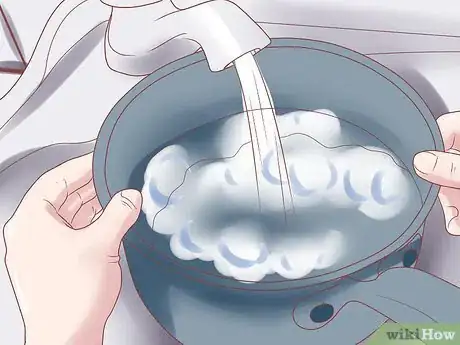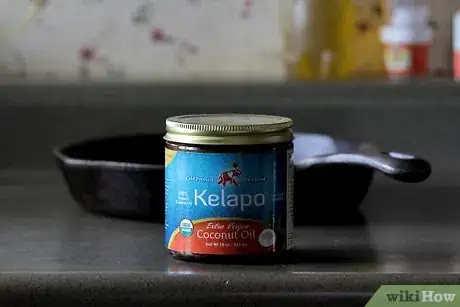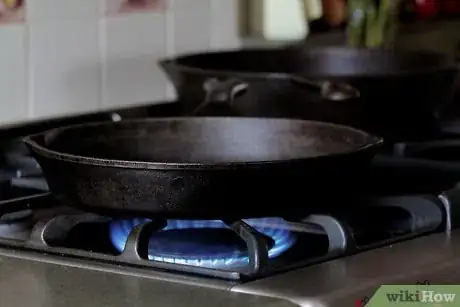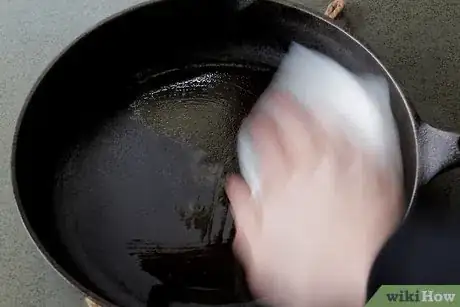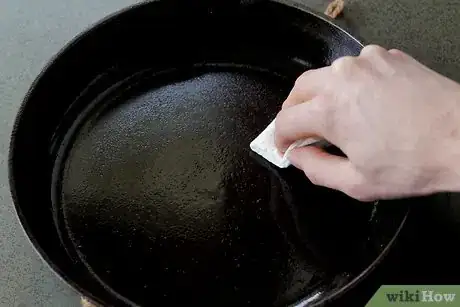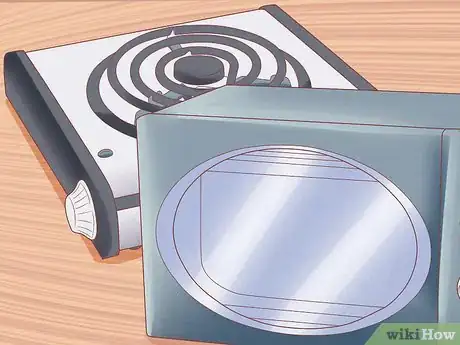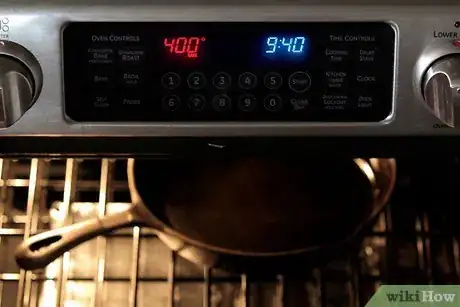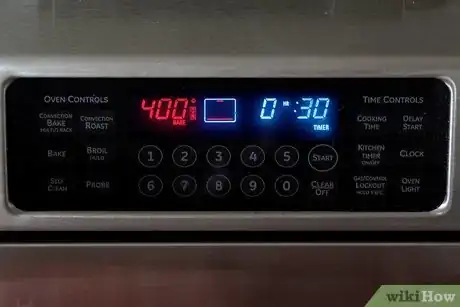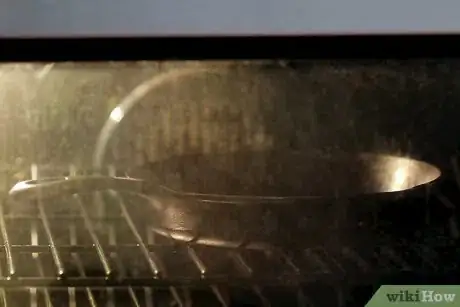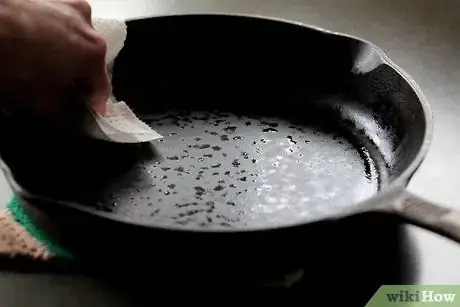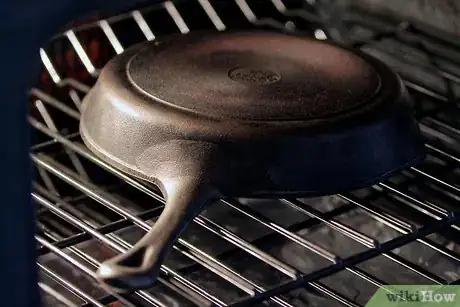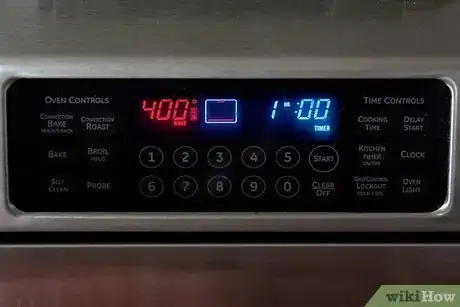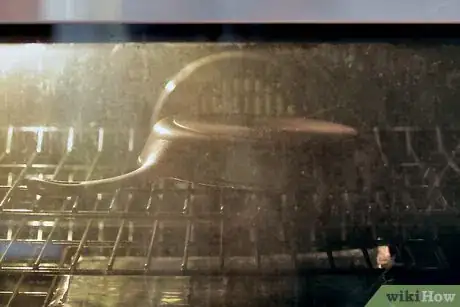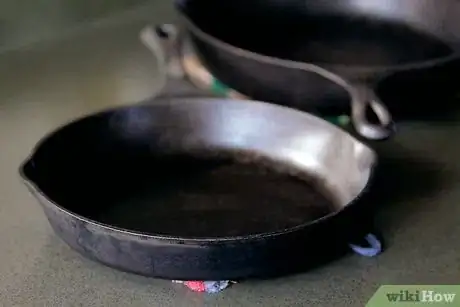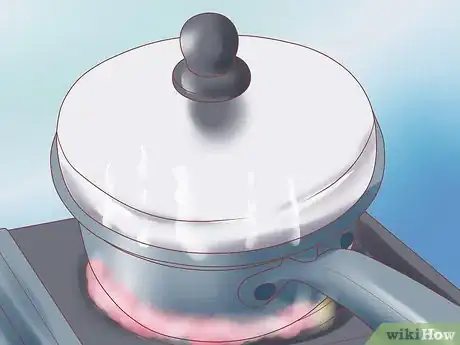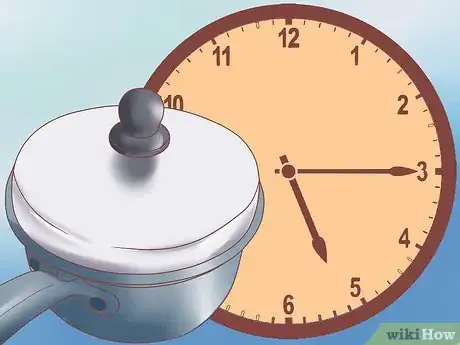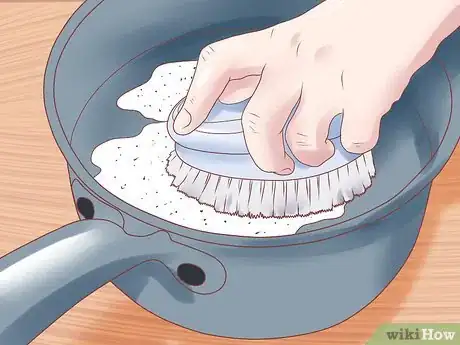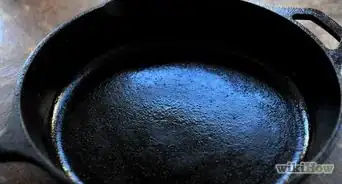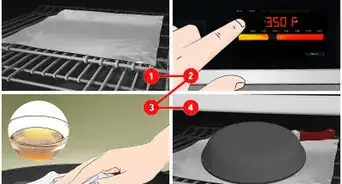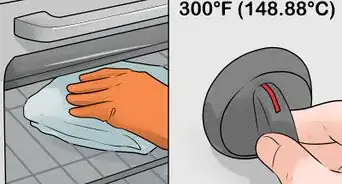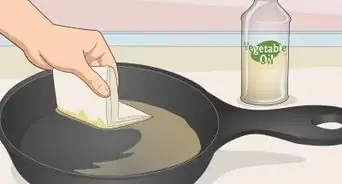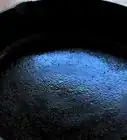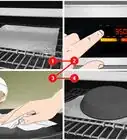This article was co-authored by Raymond Chiu. Raymond Chiu is the Director of Operations for MaidSailors.com, a residential and commercial cleaning service based in New York City that provides home and office cleaning services at affordable prices. He has a Bachelors in Business Administration and Management from Baruch College.
There are 7 references cited in this article, which can be found at the bottom of the page.
wikiHow marks an article as reader-approved once it receives enough positive feedback. In this case, 100% of readers who voted found the article helpful, earning it our reader-approved status.
This article has been viewed 211,836 times.
Curing cast iron is an essential part of keeping cast iron functional. To season cast iron cookware, you have to treat it with an oil or shortening and heat it in an oven. This process preserves your cookware and even makes it easier to clean. Read on to learn how to cure cast iron.
Steps
Preparing the cast iron
Cleaning the cookware
-
1Clean the cookware. It doesn't have to be 100 percent bare metal––scrape it off with a metal implement and then scrub repeatedly with small amounts of baking soda and soap until it stops making the soda black.
-
2Rinse thoroughly and dry.[1]
Oiling the cookware
-
1Pick a neutral, food-grade oil with which to season your cookware.[2]
-
2Warm your cast iron cookware up a little bit, if you wish.
- It's important to not warm the cookware so much that it makes it unable to be touched. Warming up your cookware before the application of oil or shortening can make the application easier.
-
3
-
4Use a clean cloth or paper towel to wipe off extra oil or shortening.
- The cast iron cookware should look as if all the oil or shortening has been wiped away. In reality, a thin coat will remain on the cookware, and this layer will cure the cookware.[5]
-
5Choose between oven or stove curing. Each method is explained following.
Curing the cast iron
Oven curing
-
1Use aluminum foil to protect your oven.[6]
- Many people who season their cast iron cookware line a cookie sheet or the bottom of their ovens with aluminum foil so that the oil that drips off of the cookware will not touch the oven itself.
-
2Place your cast iron cookware into your oven.
- You can choose a temperature anywhere between 350 to 500 Fahrenheit (176 to 260 Celsius). The perfect temperature depends on the size of your cookware and the amount of time you intend to cure it for.
-
3Allow the cookware to heat for about half an hour.[7]
-
4Turn the oven off and allow the cookware to cool.
-
5Take the cookware out of oven and remove any excess oil or shortening that may have presented during the initial heating.
-
6Put the cookware back into the oven, except this time, put it in upside down.
-
7Reheat the cookware for at least 1 hour.
-
8Let the cookware cool down to room temperature before removing it again.
-
9Consider repeating the seasoning process a few more times. Repeating the process of seasoning can result in thicker seasoning layers.[8]
Stove curing
-
1Cover the cookware with a lid. This could be a lid from the actual cookware or one borrowed from something else, such as a wok.
-
2Place the cookware on a matching-size element on the stove. Start with a low heat and make sure the pan is evenly seated.
-
3Every 5-15 minutes check for a light hazy smoke under the cover. If there's no smoke, increase the heat slightly.
-
4When increasing the heat slightly ceases to make the pan smoke, remove the pan from heat but leave the heat on. You found your ideal curing temperature.
-
5After the pan has cooled, apply another thin coat, cover, and let sit for an hour at the ideal temperature you found. Do this a total of two more times (three coats in total).[9]
-
6Finally (and from now on after every time you cook), scrub it out with a plastic brush and regular table salt. Then rinse thoroughly, towel dry, and apply a thin coat of your favorite cooking oil. The salt helps clean, sanitize, and preserves the temper by providing iodine which anchors the oil esters.
Expert Q&A
-
QuestionWhat is the best oil to season a cast iron skillet?
 Raymond ChiuRaymond Chiu is the Director of Operations for MaidSailors.com, a residential and commercial cleaning service based in New York City that provides home and office cleaning services at affordable prices. He has a Bachelors in Business Administration and Management from Baruch College.
Raymond ChiuRaymond Chiu is the Director of Operations for MaidSailors.com, a residential and commercial cleaning service based in New York City that provides home and office cleaning services at affordable prices. He has a Bachelors in Business Administration and Management from Baruch College.
House Cleaning Professional Vegetable oils like sunflower, safflower, "light" olive oil and canola are suitable.
Vegetable oils like sunflower, safflower, "light" olive oil and canola are suitable. -
QuestionIs it okay to cure a pan right side up in the oven?
 Community AnswerIt'll be fine if you used a thin enough layer of oil. The only potential problem is that excess oil will congeal in the pan and turn into sticky black gunk rather than drip out like it will if you season upside-down.
Community AnswerIt'll be fine if you used a thin enough layer of oil. The only potential problem is that excess oil will congeal in the pan and turn into sticky black gunk rather than drip out like it will if you season upside-down. -
QuestionIf I haven't used cast iron for a while. Can I use oil to cure it and then cook in the oil to further cure it?
 Community AnswerNo. You should clean the skillet properly before cooking in it.
Community AnswerNo. You should clean the skillet properly before cooking in it.
Warnings
- Don't be alarmed if your cast iron cookware begins to smoke while it is in the oven. Simply reduce the oven's temperature in increments of 10 degrees until the smoke disappears. Smoke will not have an effect on the cast iron.⧼thumbs_response⧽
- Scrubbing your cured cast iron cookware too hard can result in the need to re-season your cookware. After using your cast iron cookware, wash it gently with soap and water, rinse it, and dry it completely.⧼thumbs_response⧽
References
- ↑ https://www.thekitchn.com/how-to-season-a-cast-iron-skillet-cleaning-lessons-from-the-kitchn-107614
- ↑ http://www.lodgemfg.com/use-and-care/cast-iron-lets-cook
- ↑ https://www.today.com/food/how-season-cast-iron-pan-so-you-can-use-it-t100569
- ↑ Raymond Chiu. House Cleaning Professional. Expert Interview. 15 October 2019.
- ↑ Raymond Chiu. House Cleaning Professional. Expert Interview. 15 October 2019.
- ↑ https://www.thekitchn.com/how-to-season-a-cast-iron-skillet-cleaning-lessons-from-the-kitchn-107614
- ↑ https://www.today.com/food/how-season-cast-iron-pan-so-you-can-use-it-t100569
- ↑ https://www.seriouseats.com/2016/09/how-to-season-cast-iron-pans-skillets-cookware.html
- ↑ https://www.southernkitchen.com/articles/eat/how-to-season-a-cast-iron-skillet-even-if-you-dont-eat-meat
About This Article
To cure cast iron, warm the cookware slightly over the stove. Then, use a cloth to apply a thin layer of olive oil, shortening, or lard all over the cookware, including the exterior. Use a clean cloth to wipe away the excess oil. Place a lid on the pan and put it over low heat. Wait 5-15 minutes to check for haze under the lid, increasing the temperature until you see it. Remove the pan from the heat to cool. Apply another coat of oil, and place it on the heat for an hour. Repeat this curing process 2 times before scrubbing the cast iron with table salt and rinsing.

